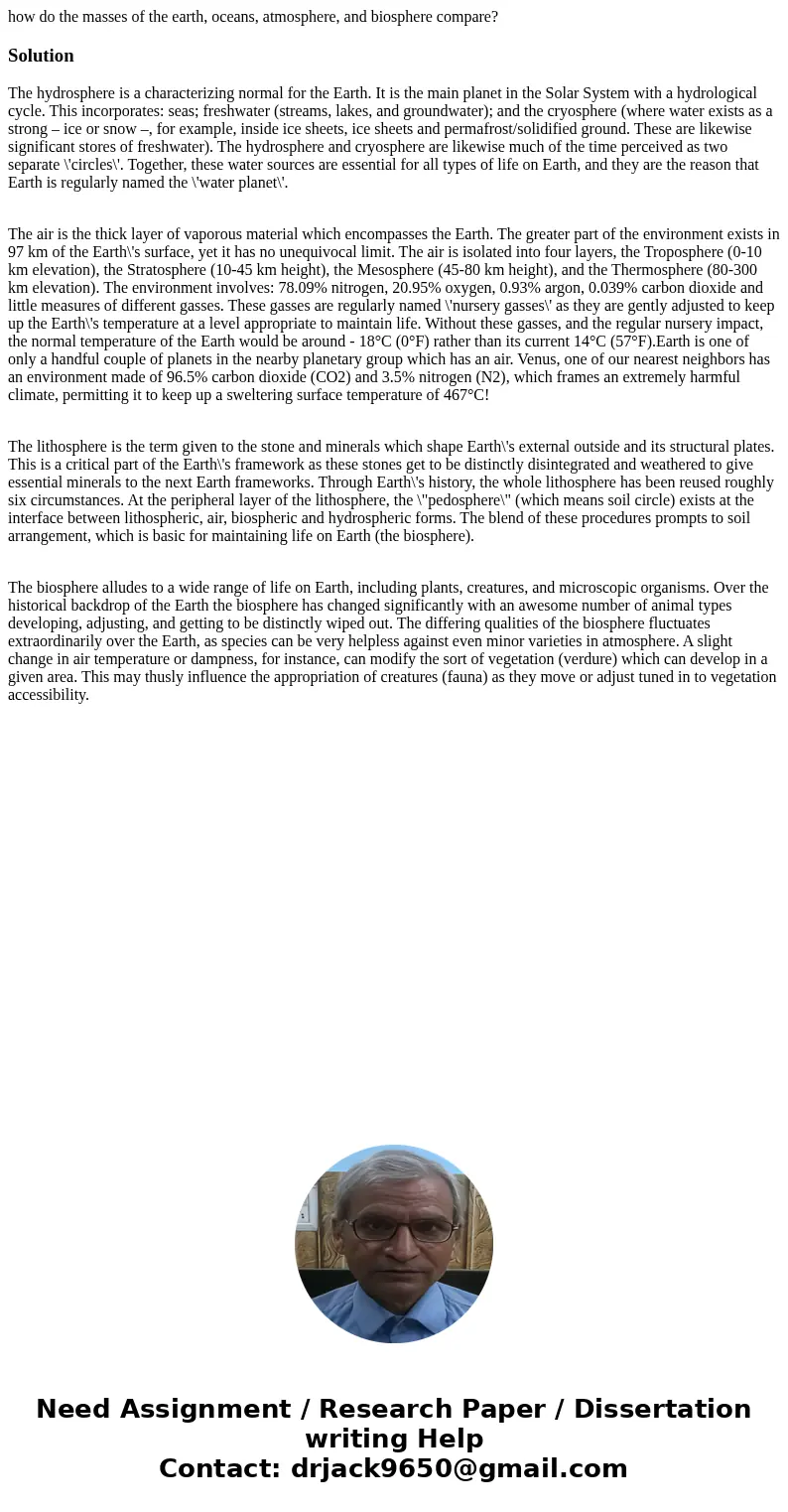how do the masses of the earth oceans atmosphere and biosphe
how do the masses of the earth, oceans, atmosphere, and biosphere compare?
Solution
The hydrosphere is a characterizing normal for the Earth. It is the main planet in the Solar System with a hydrological cycle. This incorporates: seas; freshwater (streams, lakes, and groundwater); and the cryosphere (where water exists as a strong – ice or snow –, for example, inside ice sheets, ice sheets and permafrost/solidified ground. These are likewise significant stores of freshwater). The hydrosphere and cryosphere are likewise much of the time perceived as two separate \'circles\'. Together, these water sources are essential for all types of life on Earth, and they are the reason that Earth is regularly named the \'water planet\'.
The air is the thick layer of vaporous material which encompasses the Earth. The greater part of the environment exists in 97 km of the Earth\'s surface, yet it has no unequivocal limit. The air is isolated into four layers, the Troposphere (0-10 km elevation), the Stratosphere (10-45 km height), the Mesosphere (45-80 km height), and the Thermosphere (80-300 km elevation). The environment involves: 78.09% nitrogen, 20.95% oxygen, 0.93% argon, 0.039% carbon dioxide and little measures of different gasses. These gasses are regularly named \'nursery gasses\' as they are gently adjusted to keep up the Earth\'s temperature at a level appropriate to maintain life. Without these gasses, and the regular nursery impact, the normal temperature of the Earth would be around - 18°C (0°F) rather than its current 14°C (57°F).Earth is one of only a handful couple of planets in the nearby planetary group which has an air. Venus, one of our nearest neighbors has an environment made of 96.5% carbon dioxide (CO2) and 3.5% nitrogen (N2), which frames an extremely harmful climate, permitting it to keep up a sweltering surface temperature of 467°C!
The lithosphere is the term given to the stone and minerals which shape Earth\'s external outside and its structural plates. This is a critical part of the Earth\'s framework as these stones get to be distinctly disintegrated and weathered to give essential minerals to the next Earth frameworks. Through Earth\'s history, the whole lithosphere has been reused roughly six circumstances. At the peripheral layer of the lithosphere, the \"pedosphere\" (which means soil circle) exists at the interface between lithospheric, air, biospheric and hydrospheric forms. The blend of these procedures prompts to soil arrangement, which is basic for maintaining life on Earth (the biosphere).
The biosphere alludes to a wide range of life on Earth, including plants, creatures, and microscopic organisms. Over the historical backdrop of the Earth the biosphere has changed significantly with an awesome number of animal types developing, adjusting, and getting to be distinctly wiped out. The differing qualities of the biosphere fluctuates extraordinarily over the Earth, as species can be very helpless against even minor varieties in atmosphere. A slight change in air temperature or dampness, for instance, can modify the sort of vegetation (verdure) which can develop in a given area. This may thusly influence the appropriation of creatures (fauna) as they move or adjust tuned in to vegetation accessibility.

 Homework Sourse
Homework Sourse